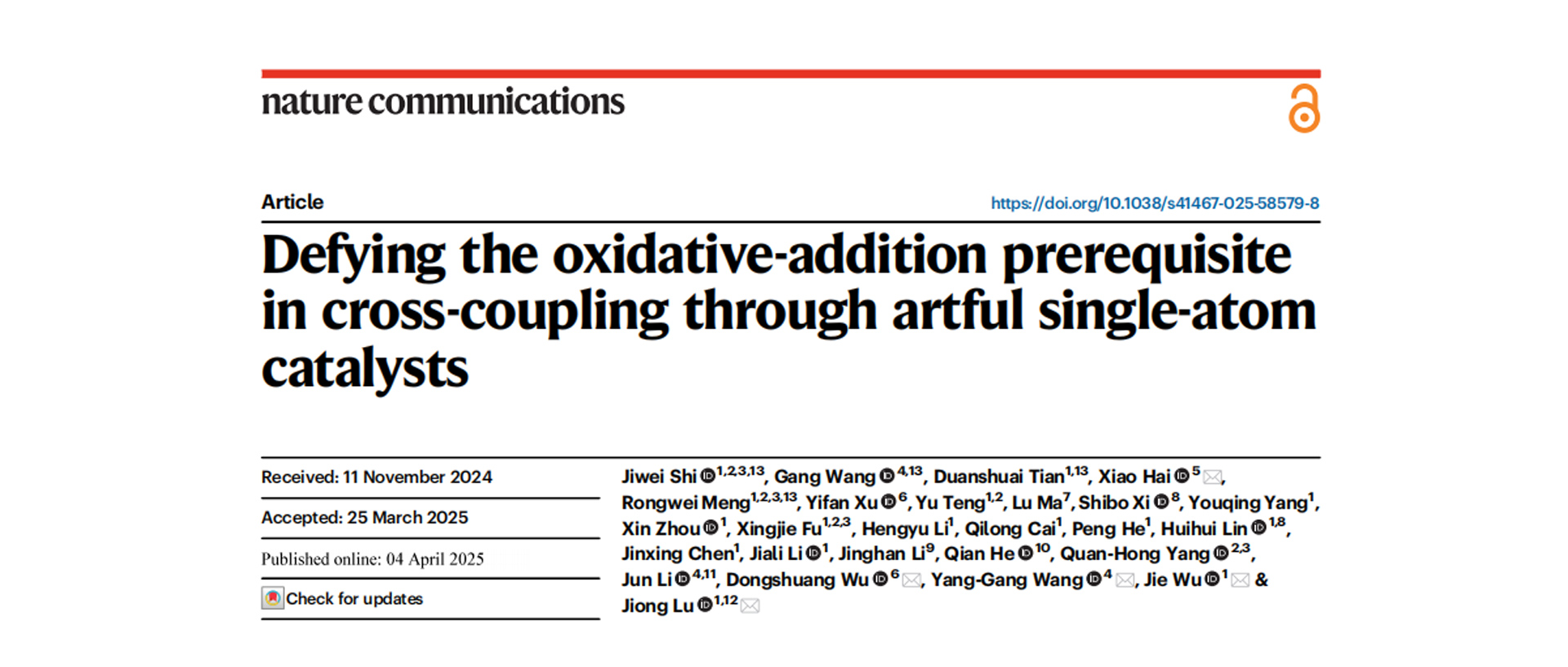Defying the Oxidative-Addition Prerequisite in Cross-Coupling Through Artful Single-Atom Catalysts
A research team led by Associate Professor Lu Jiong, Senior Principal Investigator from the Energy and Environmental Nanotech Research Platform of NUSRI Suzhou, has published their findings in Nature Communications. The team reports an “anchoring-borrowing” strategy combined with facet engineering to develop artful single-atom catalysts (ASACs). This achievement presents an efficient catalytic system for the sustainable industrial production of fine chemicals and pharmaceuticals, demonstrating significant scientific value and application potential.

Background
The transition metal-catalysed cross-coupling reaction is a cornerstone for organic synthesis, playing a crucial role in the fine chemical and pharmaceutical industries. Heterogeneous single-atom catalysts (SACs) have emerged as a promising class of catalytic materials, attracting considerable interest for their ability to maximise atom utilisation and provide well defined active sites, effectively linking the advantages of both homogeneous and heterogeneous catalysis in organic synthesis. However, the chemical bonds between the metal centres and the support, which are necessary to prevent metal aggregation, often result in spatial constraints that limit the activation and adsorption of both coupling substrates. This restricts mononuclear metal species from effectively facilitating multi-stage organic cross-coupling reactions.
Results
To address these challenges, the research team has developed a novel “anchoring-borrowing” strategy combined with facet engineering of non-innocent reducible supports to create a class of artful single-atom catalysts (ASACs). This approach involves anchoring foreign single atoms onto specifically chosen facets of reducible metal oxides, allowing for the simultaneous “borrowing” of coordination oxygen as anchor sites and the carrier as an electron reservoir to form ASACs. These ASACs exhibit adaptive structures and distinct valence state evolution, effectively bypassing the need for bivalent changes at a single metal site, which is typically required in both conventional homogeneous and heterogeneous cross-couplings.
The design of Pd1 ASACs is achieved by anchoring Pd single atoms (Pd1) on reducible CeO2 support, particularly effective on the (110) facet. Pd1-CeO2(110) ASAC demonstrates exceptional activity, even with less reactive aryl chlorides and challenging heterocyclic substrates. It outperforms traditional catalysts with high yields and remarkable stability, achieving a record-breaking turnover number (TON).
Application
Mechanistic studies reveal that ASACs leverage dynamic structural changes, with reducible carriers acting as electron reservoirs, significantly lowering reaction barriers. Furthermore, ASACs enable efficient synthesis of biologically significant compounds, drug intermediates, and active pharmaceutical ingredients (APIs) through a scalable high-speed circulated flow synthesis, underscoring great potential for sustainable fine chemical manufacturing.




